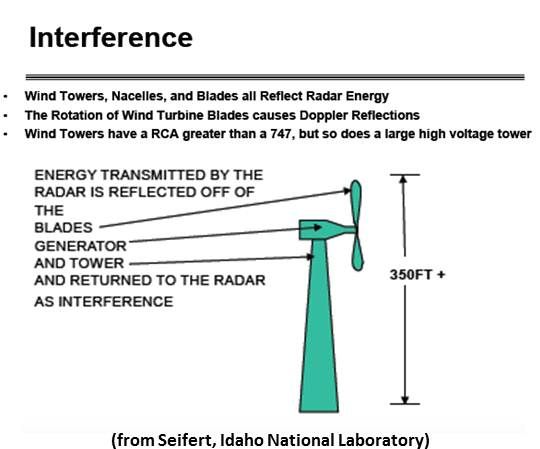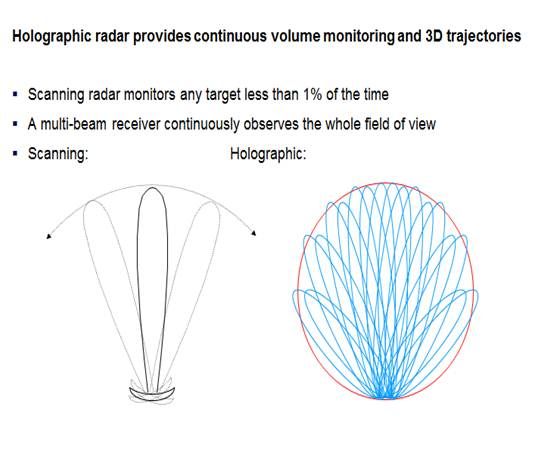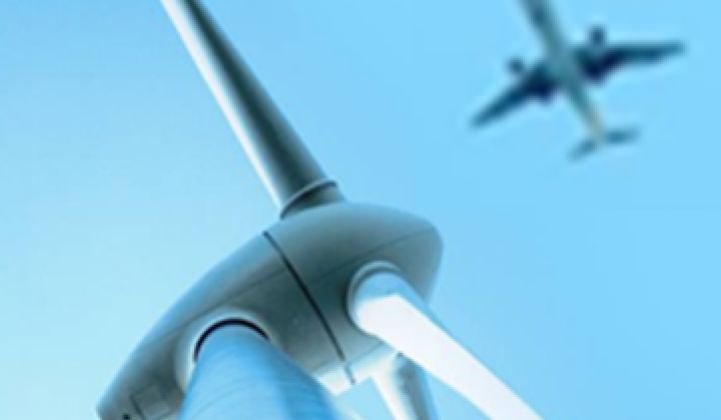In 2009, more than 9,000 megawatts of wind capacity was held up by Department of Defense (DoD) concerns about radar interference from turbines. A year later, there were 10,000 megawatts on hold. But in the last 18 months, things have changed.
“The DoD energy siting clearinghouse,” explained Tom Vinson, the American Wind Energy Association (AWEA) Senior Director of Federal Regulatory Affairs, “went through a backlog of pending projects and cleared several thousand megawatts.”
Section 358 of the National Defense Authorization Act, signed into law last January, established what Vinson called “a one-stop shop where developers can go to get their projects vetted by everyone within DoD.”
Under the Act, delaying a project now requires the “fairly high threshold” of “significant adverse impact to national security,” and, according to Vinson, individual bases can no longer block development. “They have to go up through Pentagon headquarters.”
In addition, the Act requires the DoD -- for the first time -- to consider mitigation options before stopping development.

Some mitigation efforts are being deployed and a range of advanced radar solutions are proposed. “Because of the variety of radars affected, the variety of turbine impacts and the variety of missions the DoD, the National Weather Service, the FAA and the Department of Homeland Security must protect,” Vinson said, “there’s not a single mitigation that’s going to work everywhere. The more options we have, the better.”
Vinson noted an MIT software fix that cleared “several thousand megawatts in the Columbia Gorge area.” Raytheon, Vinson said, also has a software fix that is being implemented. And there are, he added, hardware upgrades to existing radars that can help, as well.
As to new radars, Vinson said, Lockheed-Martin has proposed its advanced TPS-77 phased-array hardware as a solution. “Existing radar sends out waves at three different heights,” Vinson explained. “If data is corrupted in any of those three waves, the entire return is corrupted.” Lockheed-Martin’s phased array “sends out more than twenty different waves.” If a wind turbine interferes with “the first or the second wave,” Vinson said, “others will be fine.”
A group of offshore wind developers, Vinson said, recently jointly purchased and deployed the Lockheed-Martin technology and won the release of “three thousand megawatts of offshore wind projects” from the U.K. Ministry of Defense (MoD).
Vinson also mentioned “a holographic radar” that is being developed by Aveillant, a new company backed by U.K. venture capital powerhouse Cambridge Consultants.
According to Aveillant, radar interference issues continue to impede 6,500 megawatts of U.K. wind capacity. According to Aveillant Chief Scientific Officer Dr. Gordon Oswald, 3-D holographic radar is an advanced hardware technology that is effective in even the most demanding airspace.
Traditional radar, Dr. Oswald explained, is like scanning for moving targets in a dark room with a flashlight; Aveillant’s 3-D holographic radar, he said, is like turning on the room’s overhead light.

Aveillant hardware is built at or near a wind farm. “We illuminate the whole sky,” Dr. Oswald said. “The enabling feature” is “teraflops” worth of computing capacity with which Aveillant can see all the moving pieces and detect when something different enters the radar’s field. “It is this positioning and the ability to continuously observe and track an object,” Dr. Oswald said, that allows Aveillant to “distinguish between wind turbine and aircraft.”
Aveillant’s technology has already proved itself in two controlled MoD field tests and is being put in place at Scotland’s Prestwick Airport for its first full-scale test next year. Following validation, Dr. Oswald said, the company anticipates “entering into commercial relationships with the wind industry.”
BP Wind CEO Sir John Graham has noted that one of the problems that has limited deployment is the cost of radar issue fixes and who pays for them.
“It will have to be paid for by the wind farm operators,” Dr. Oswald said. “It’s going to be something in the region of one percent of their capital and operating costs.” Though burdensome, Dr. Oswald noted, “if it makes a difference between being able to build and operate the wind farm and not, that’s a reasonable cost.”
According to AWEA’s Vinson, the Lockheed-Martin TPS-77 hardware costs $15 million to $25 million. “Whole new radar systems are expensive,” he said. “It’s difficult to believe that an individual project could absorb that cost.” Multiple developers and multiple projects facing the issue could, however, form a consortium and share the cost, he noted.
Software solutions and hardware upgrade solutions, Vinson said, are more affordable, falling in the “couple-hundred-thousand-dollar range.” One or two have been successfully deployed. “But we don’t have a lot of experience at mitigating this yet,” he said, because many proposed solutions are not yet FAA-approved. However, the involved agencies -- DoD, FAA, DOE, DHS, NOAA -- have plans for detailed assessment of “off-the-shelf technologies that can be field tested” in 2012.
"Industry and the agencies see the path forward and are working as quickly as possible to get to a point where it is not an issue," Vinson said.
“New radars will be relevant as a solution in some cases, but they won’t necessary be so in all cases. As the wind build-out continues, we’re going to continue to see instances in which there are potential conflicts with air space needs, whether civilian or national security-related, because the easy sites are already taken. It’s going to be an ongoing issue. But there are also near-term, validated solutions.”



